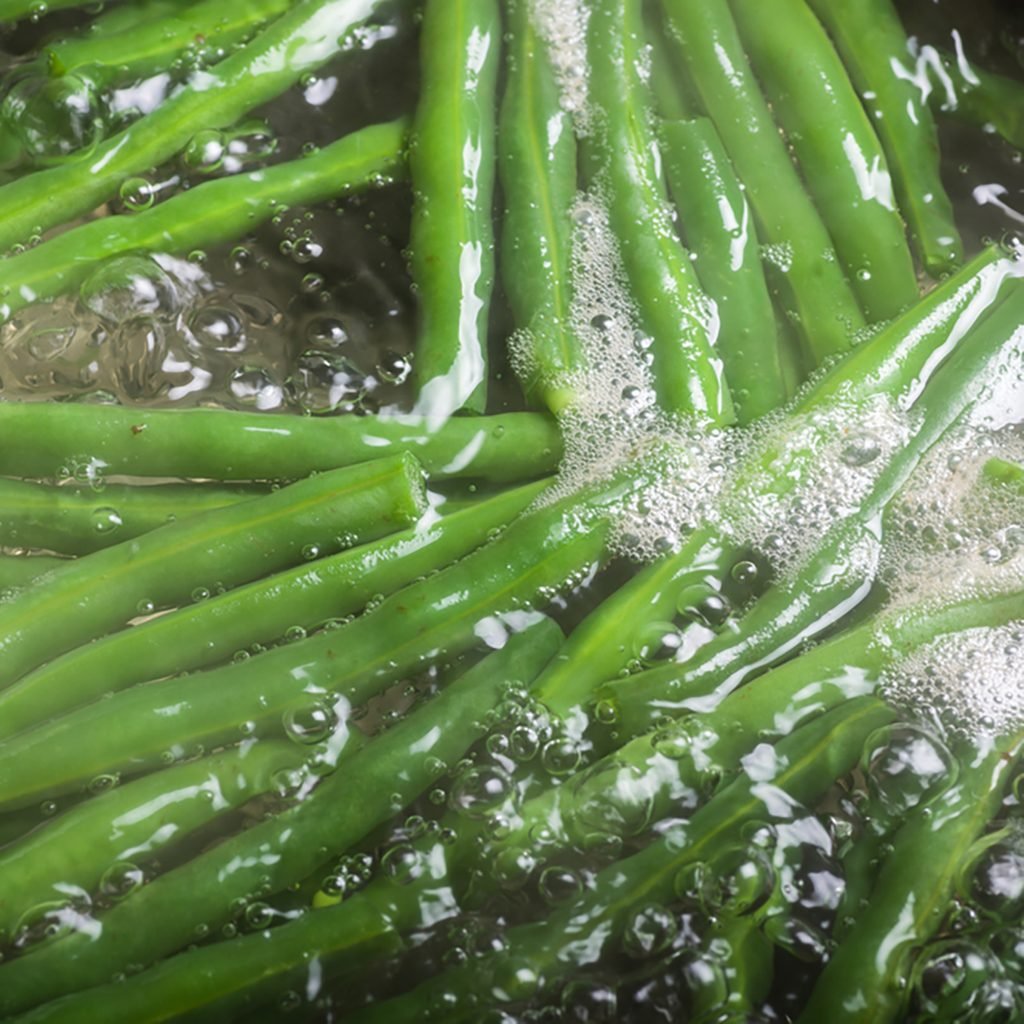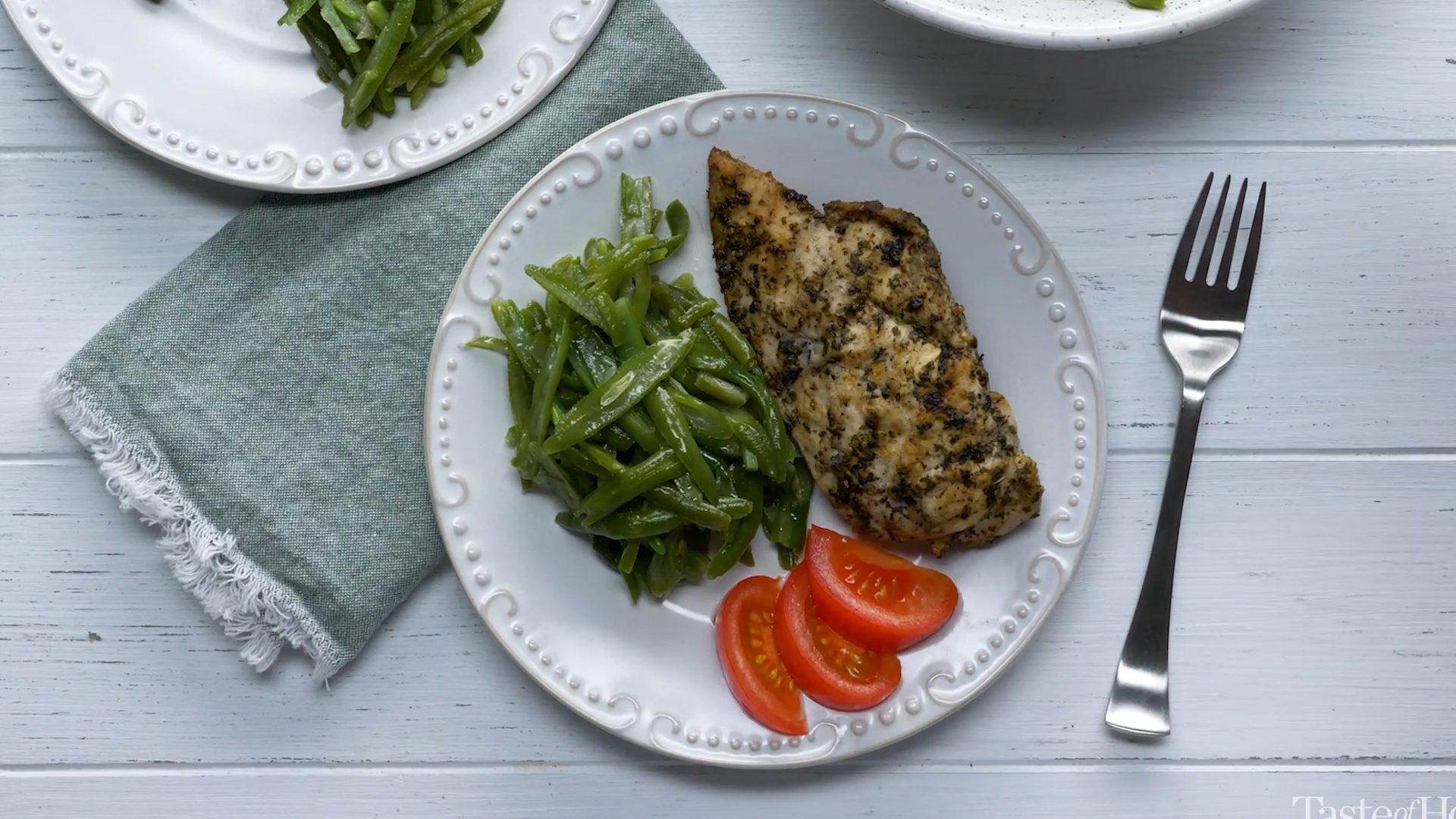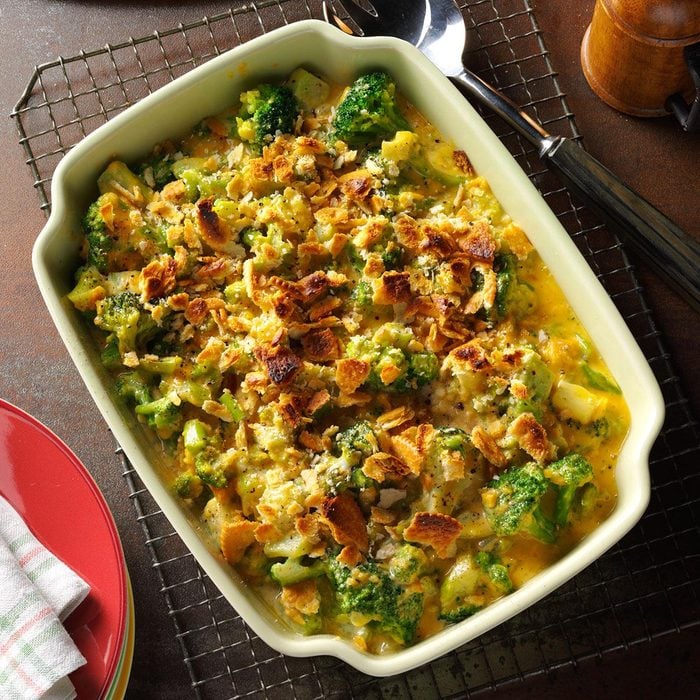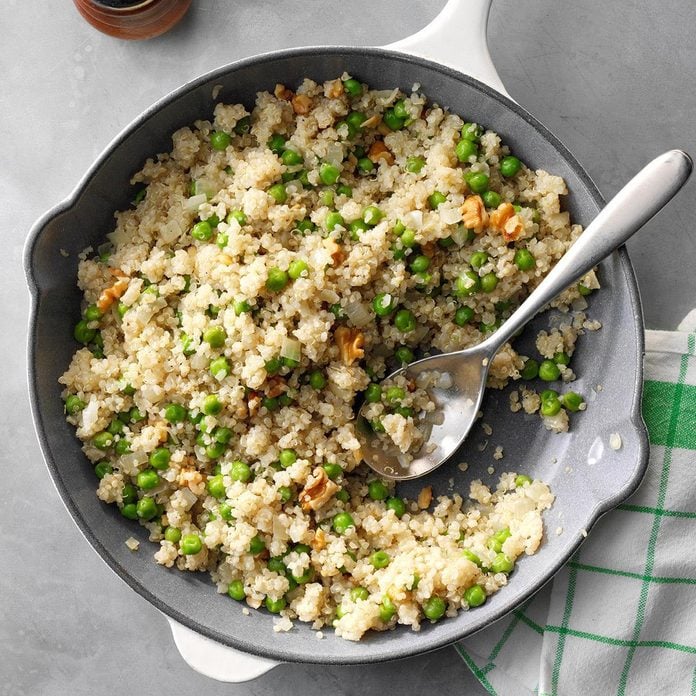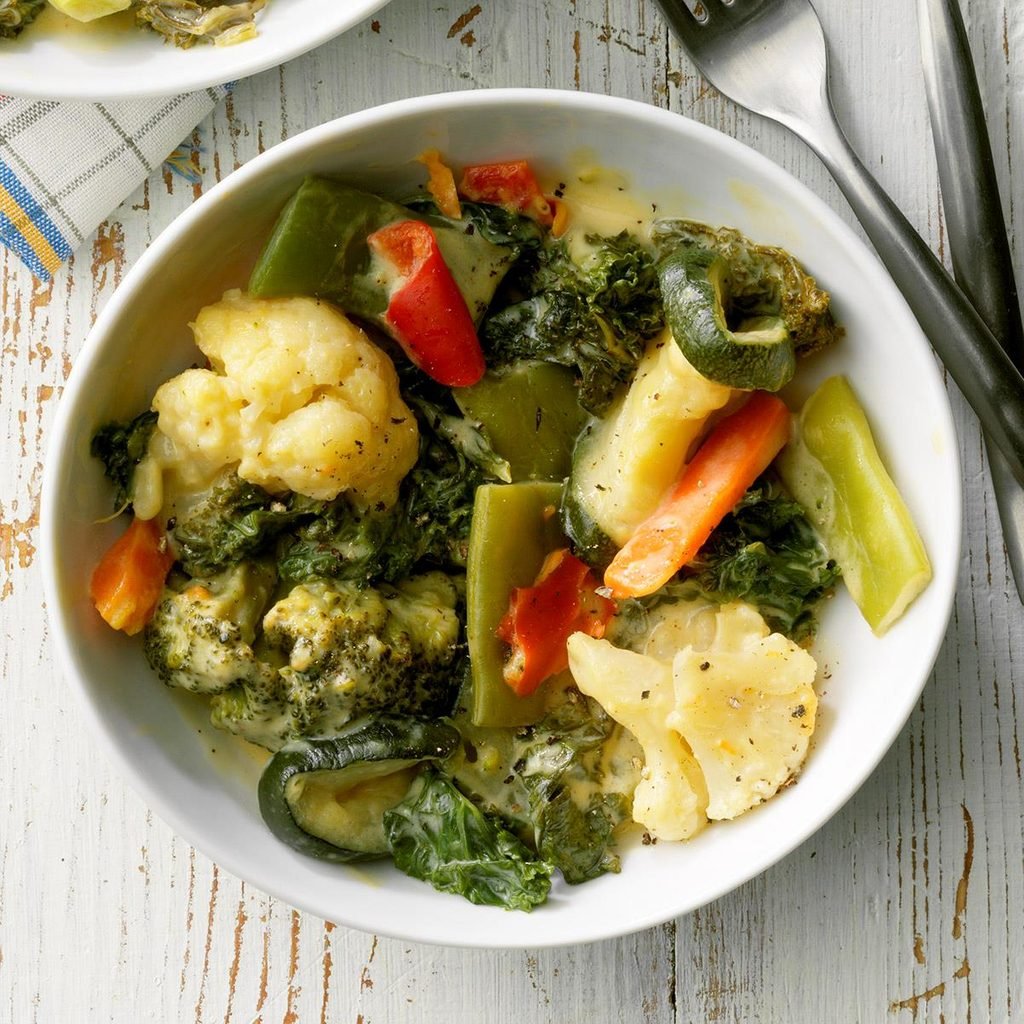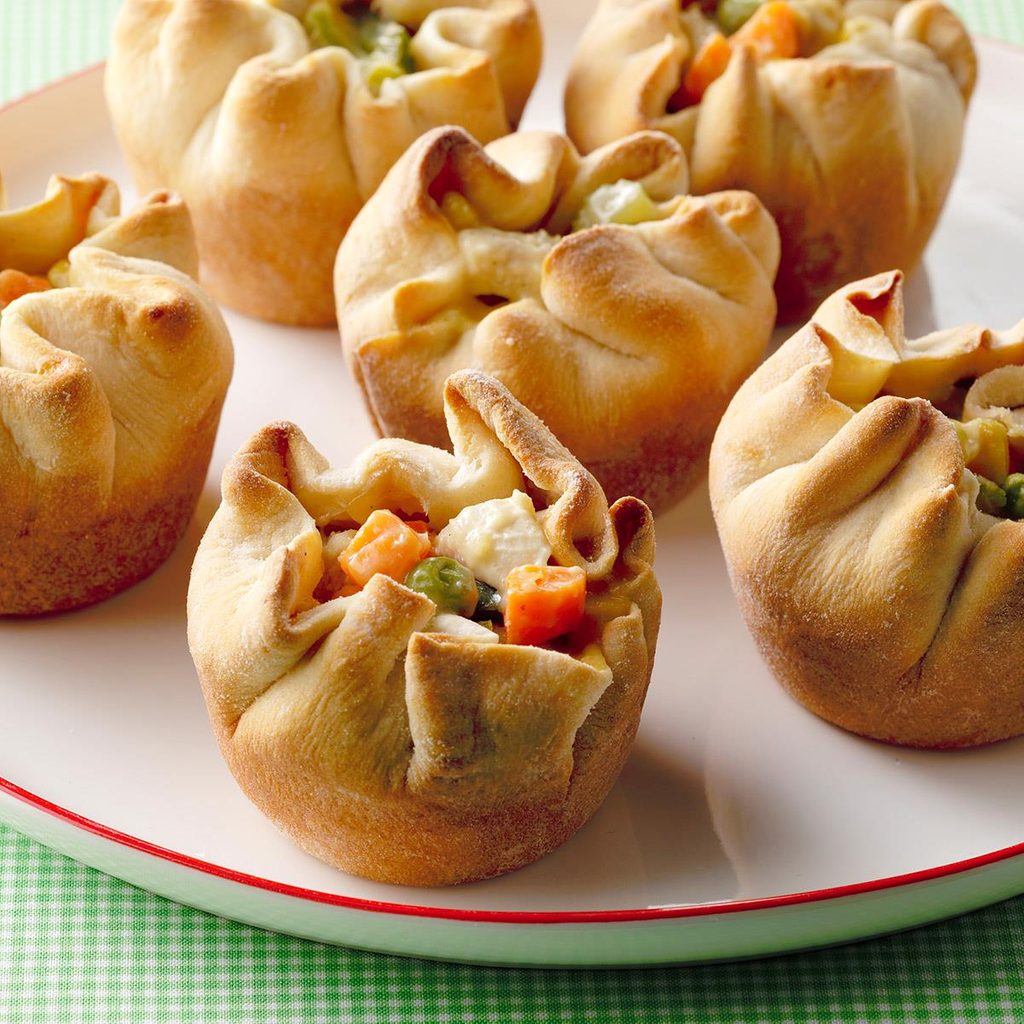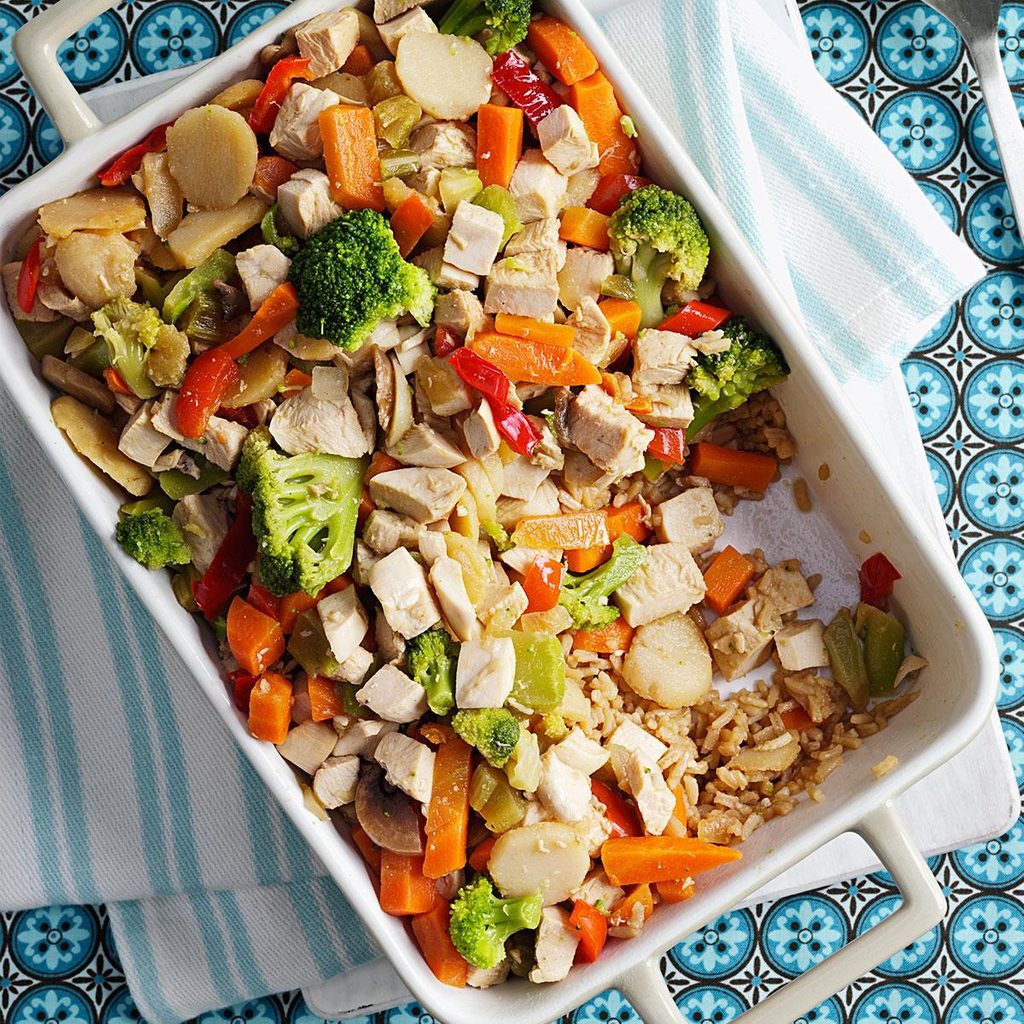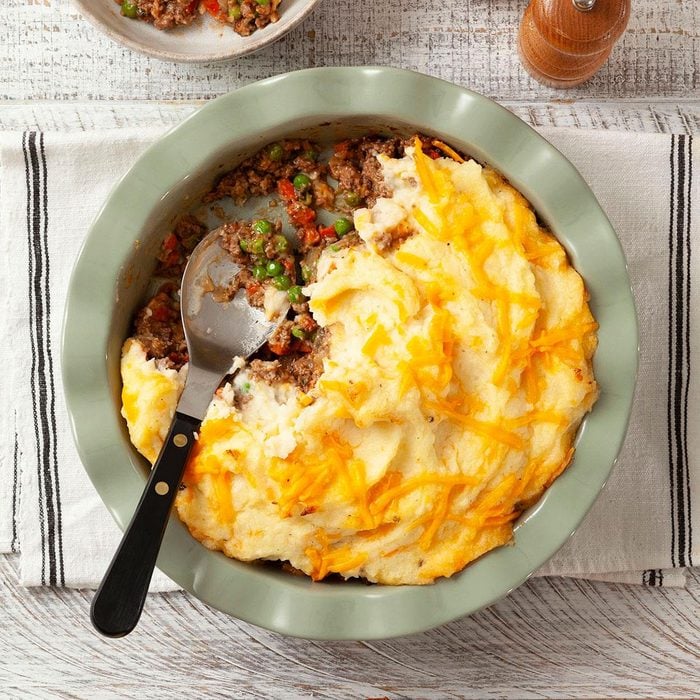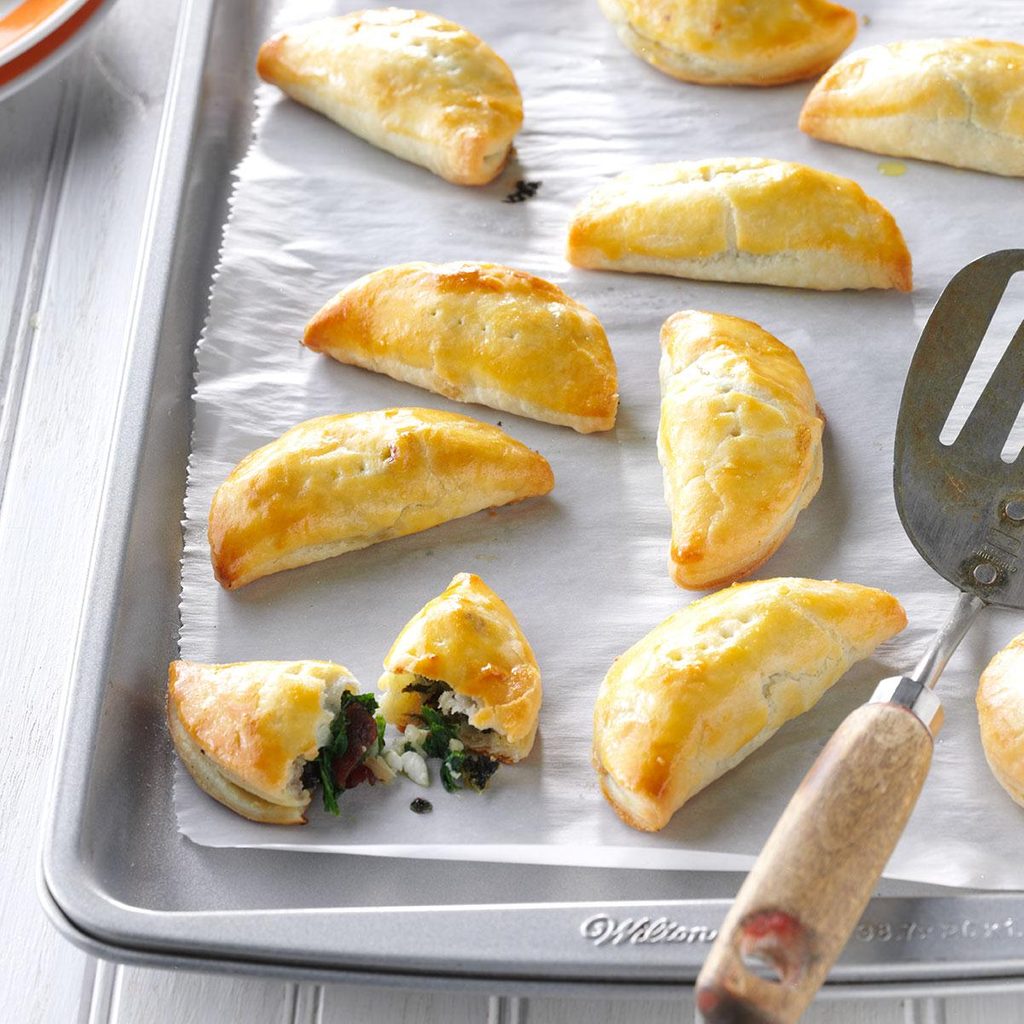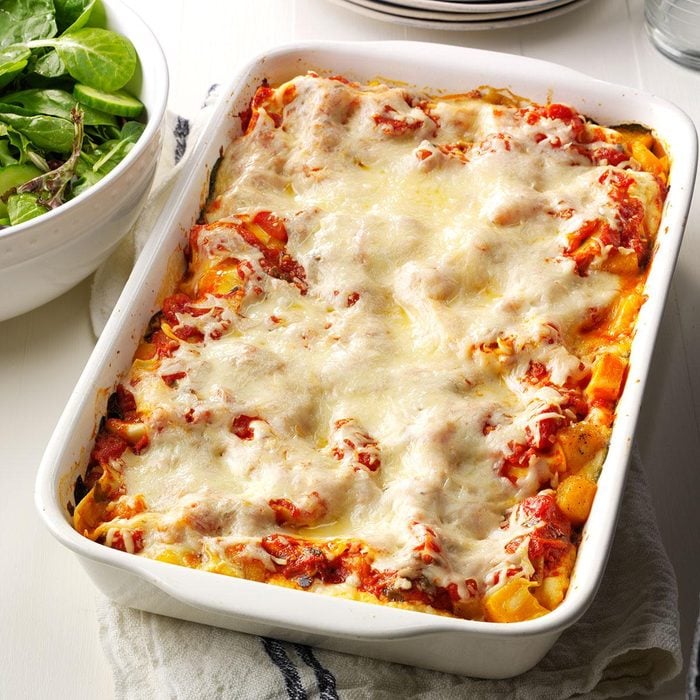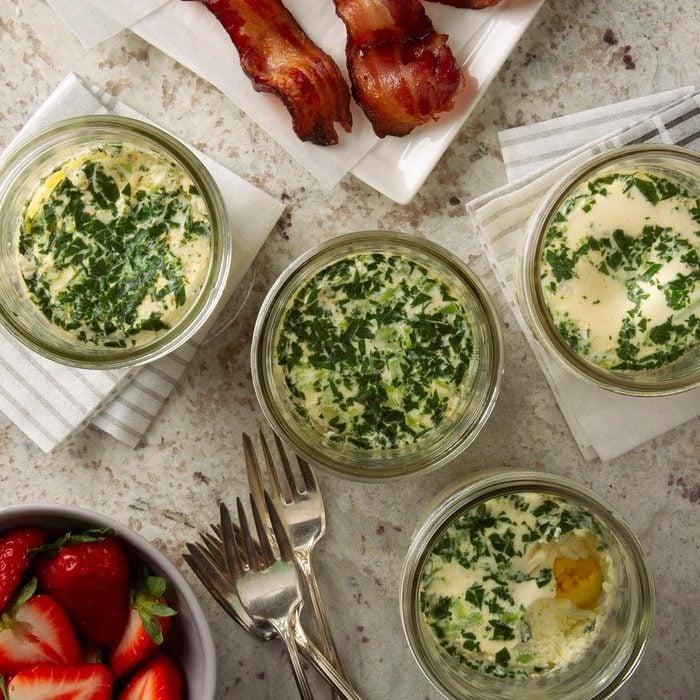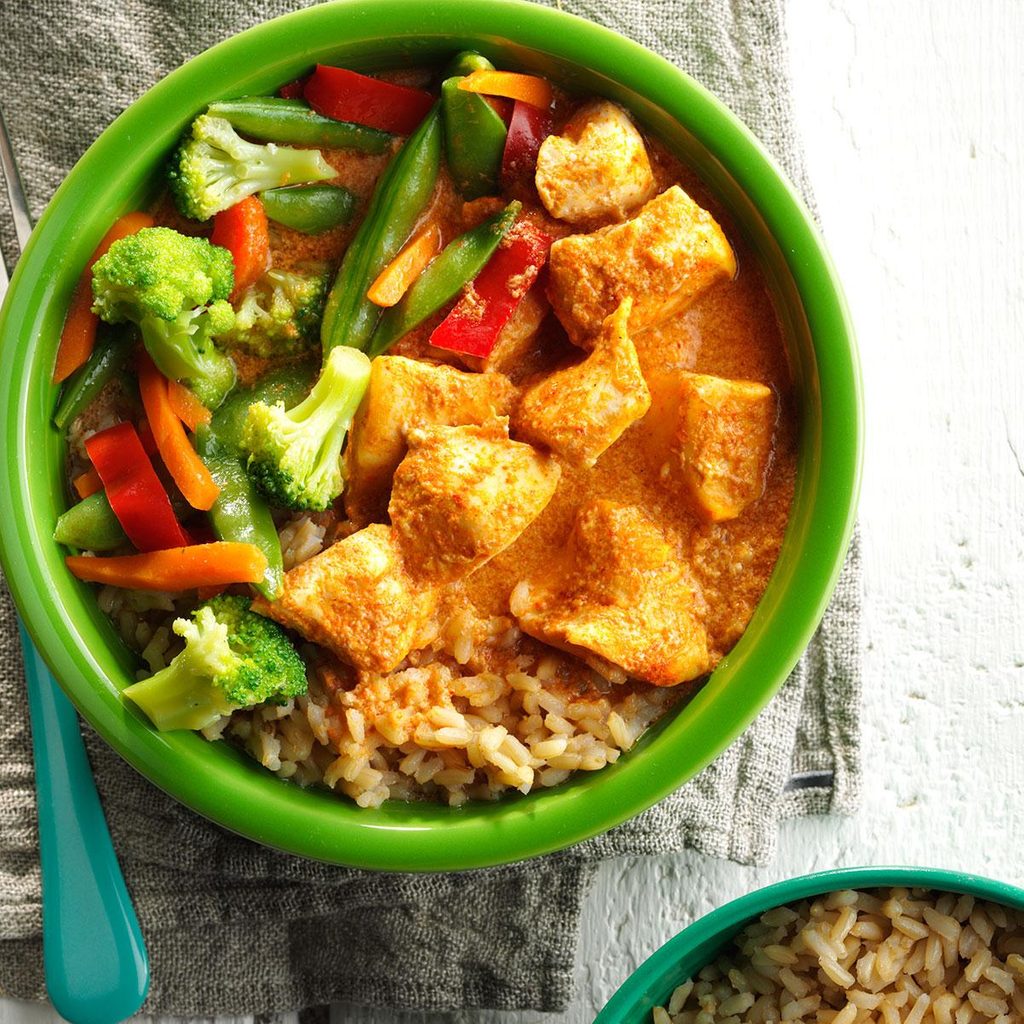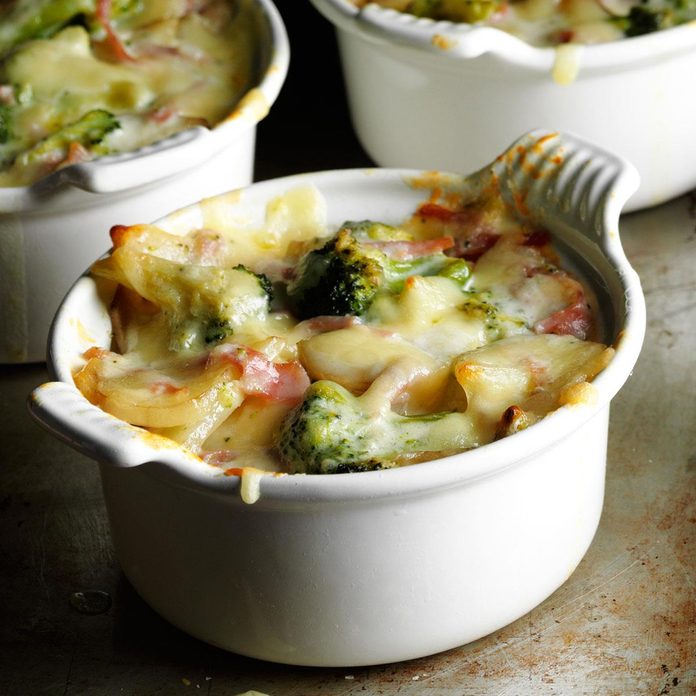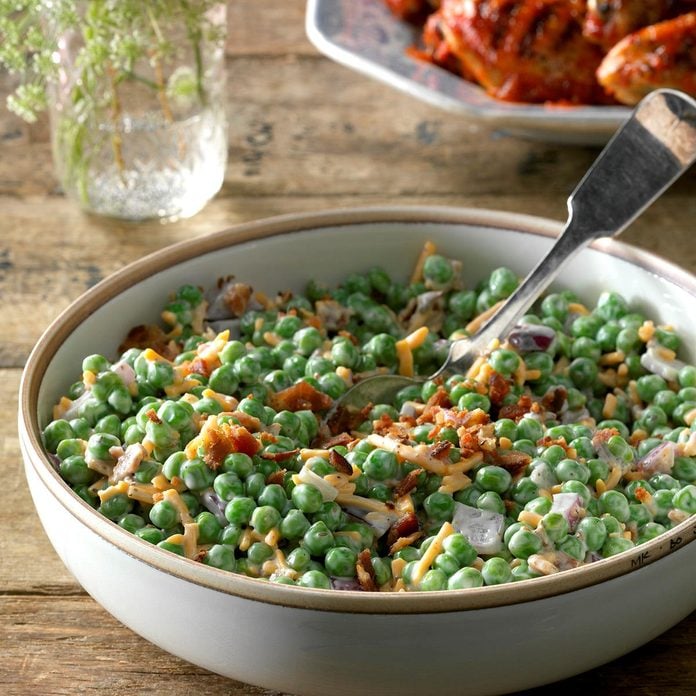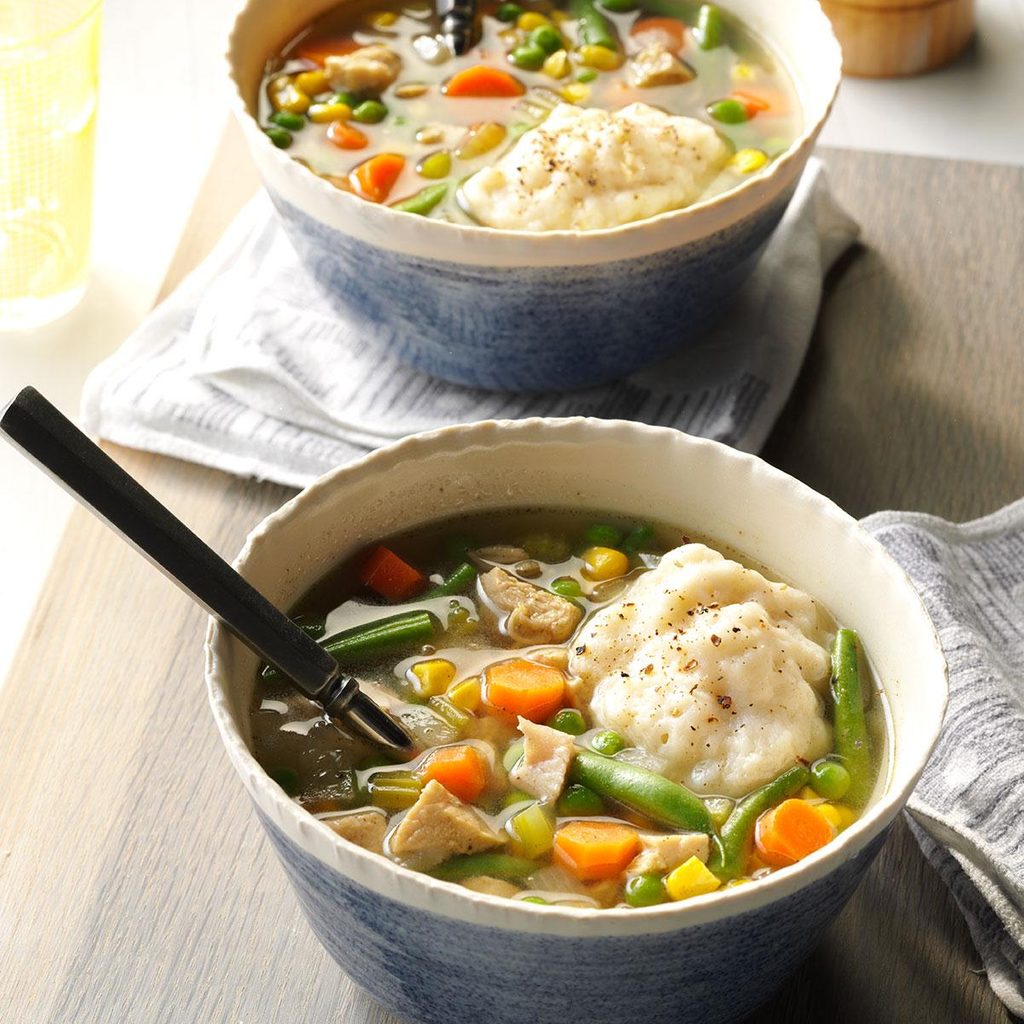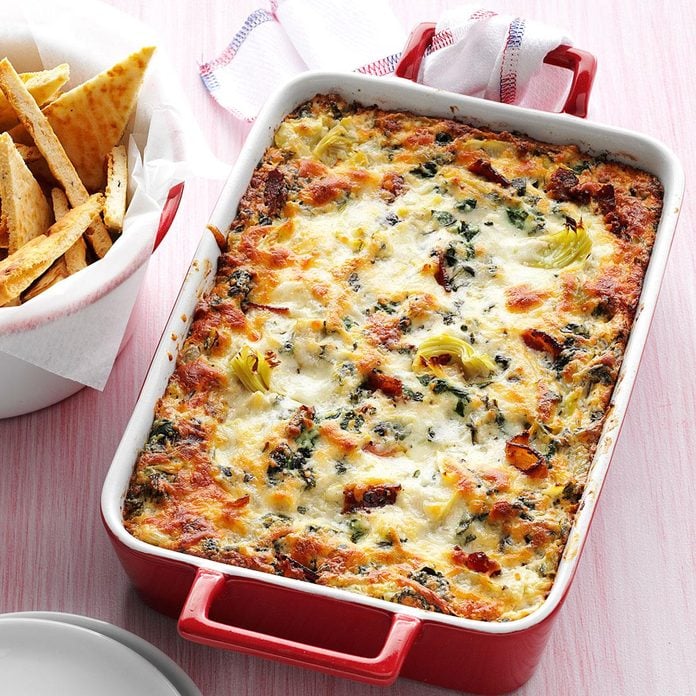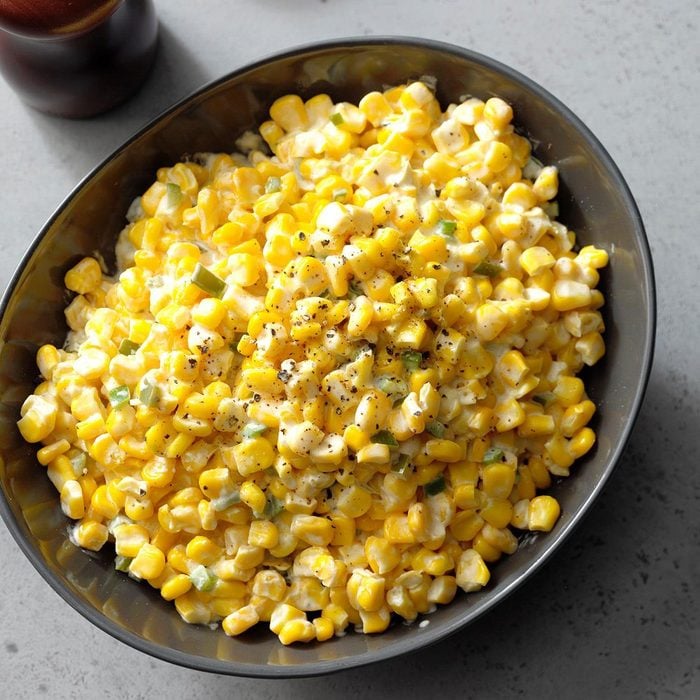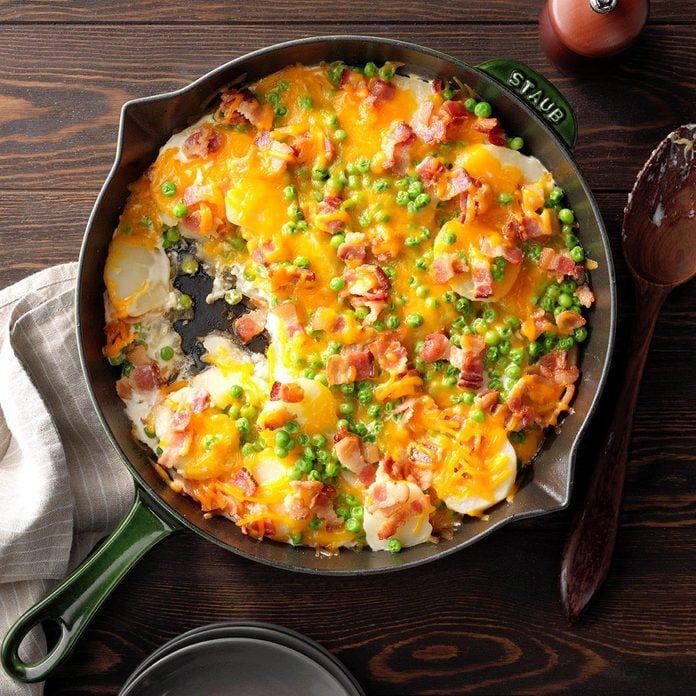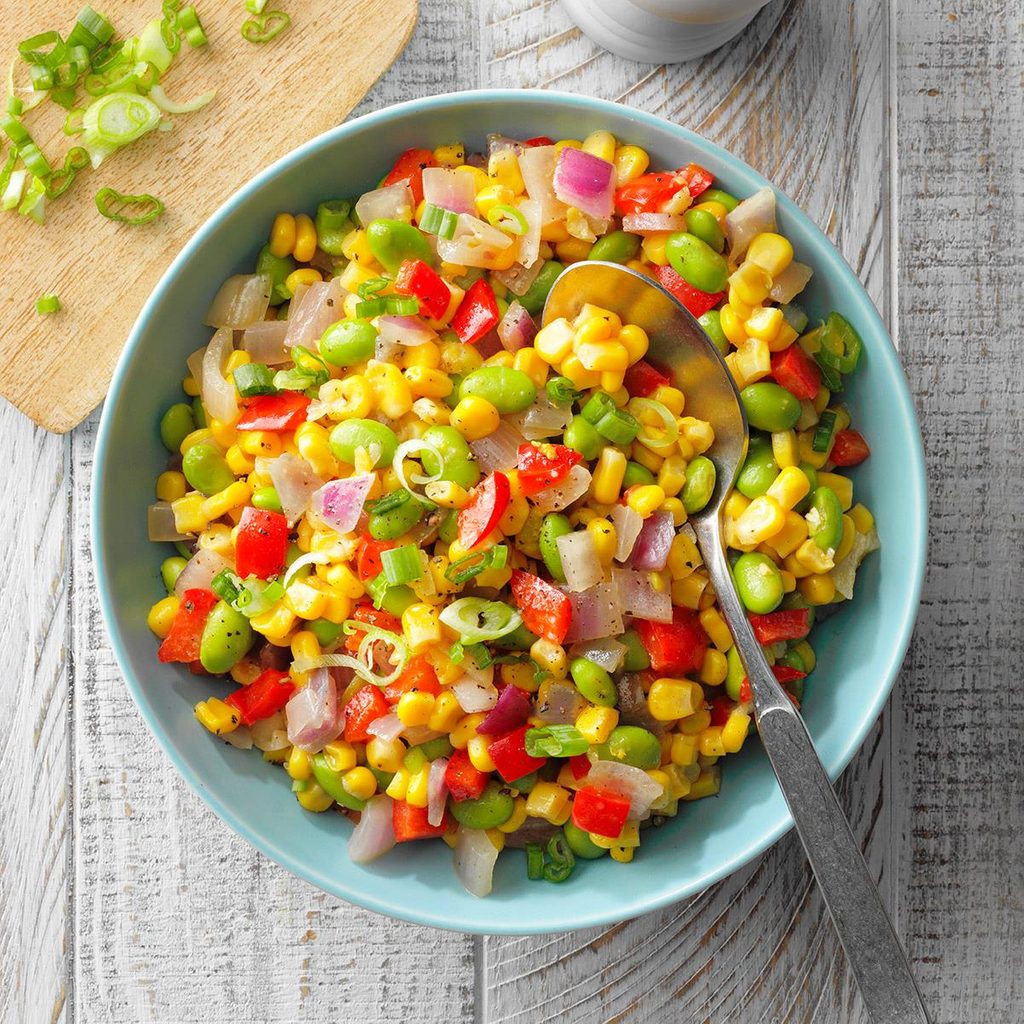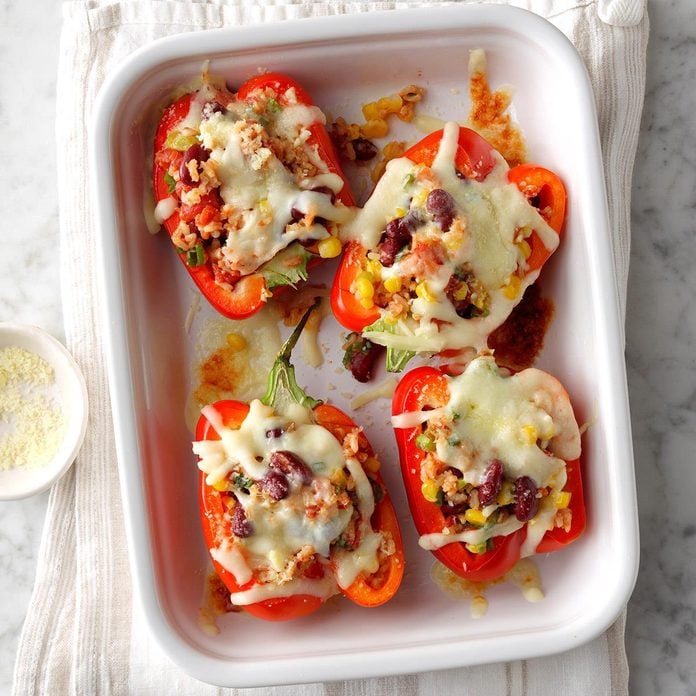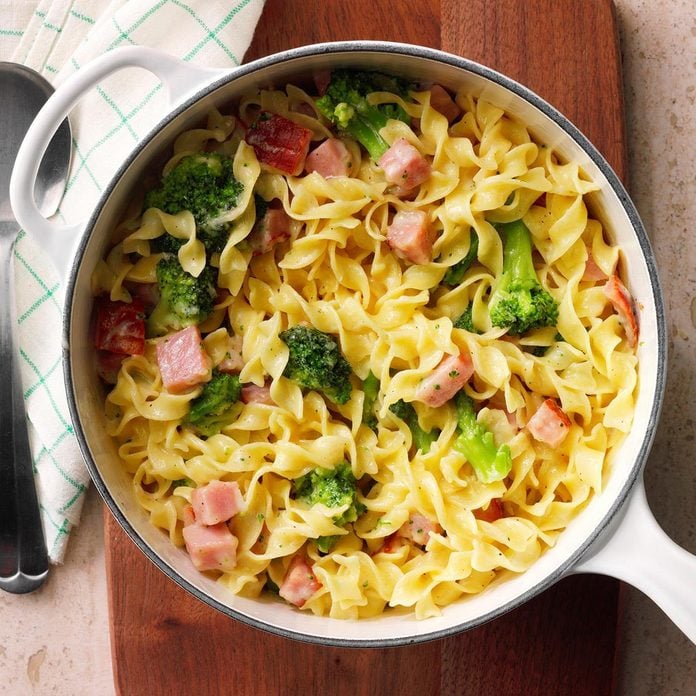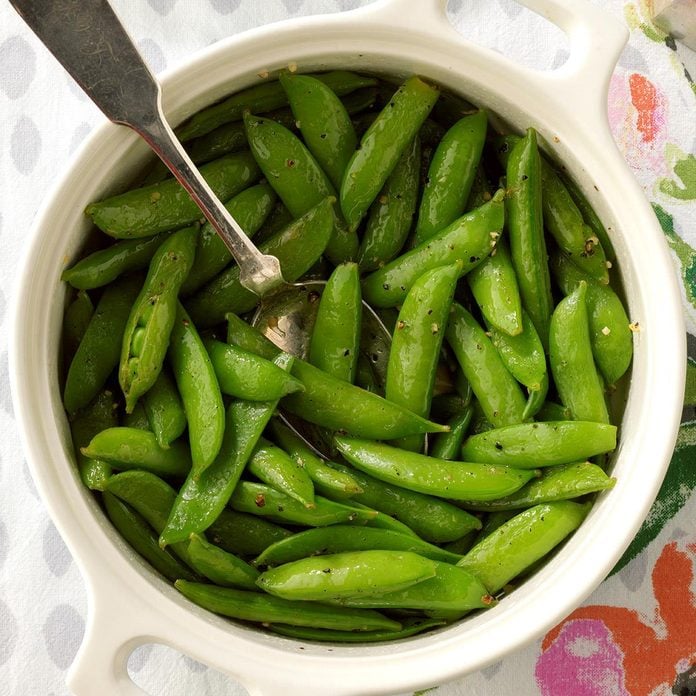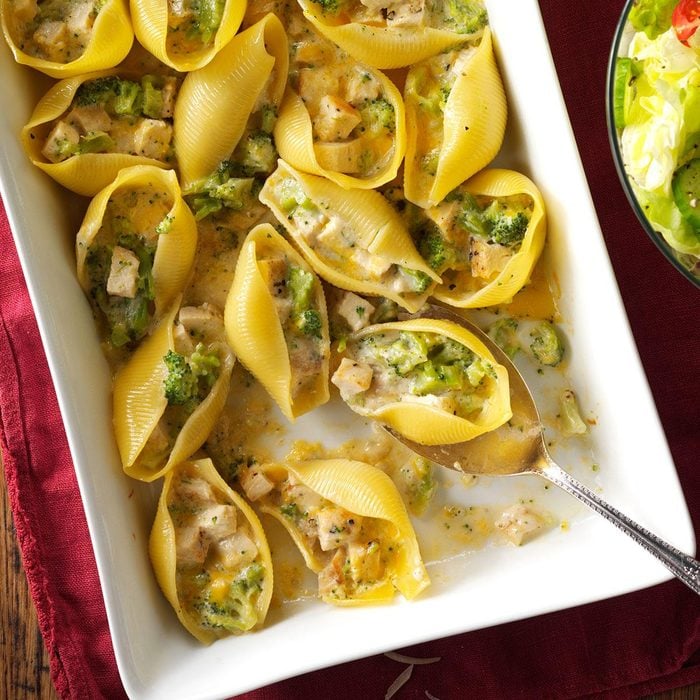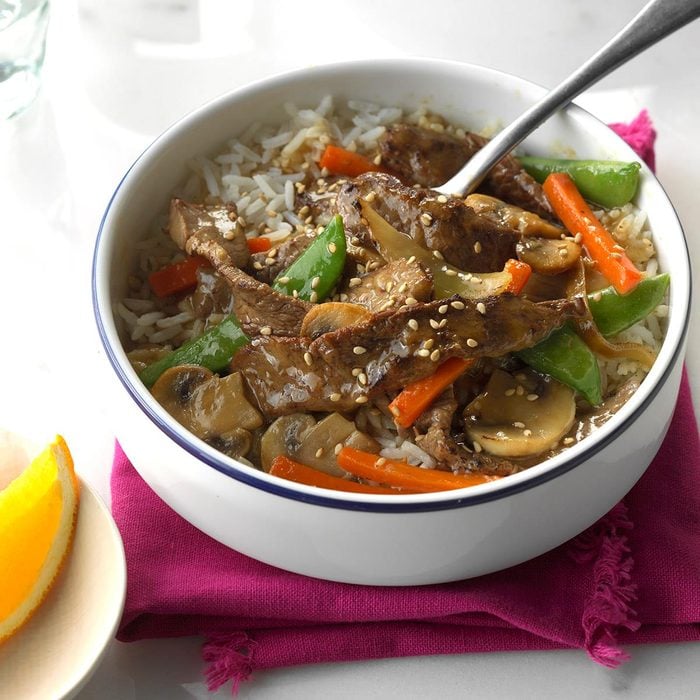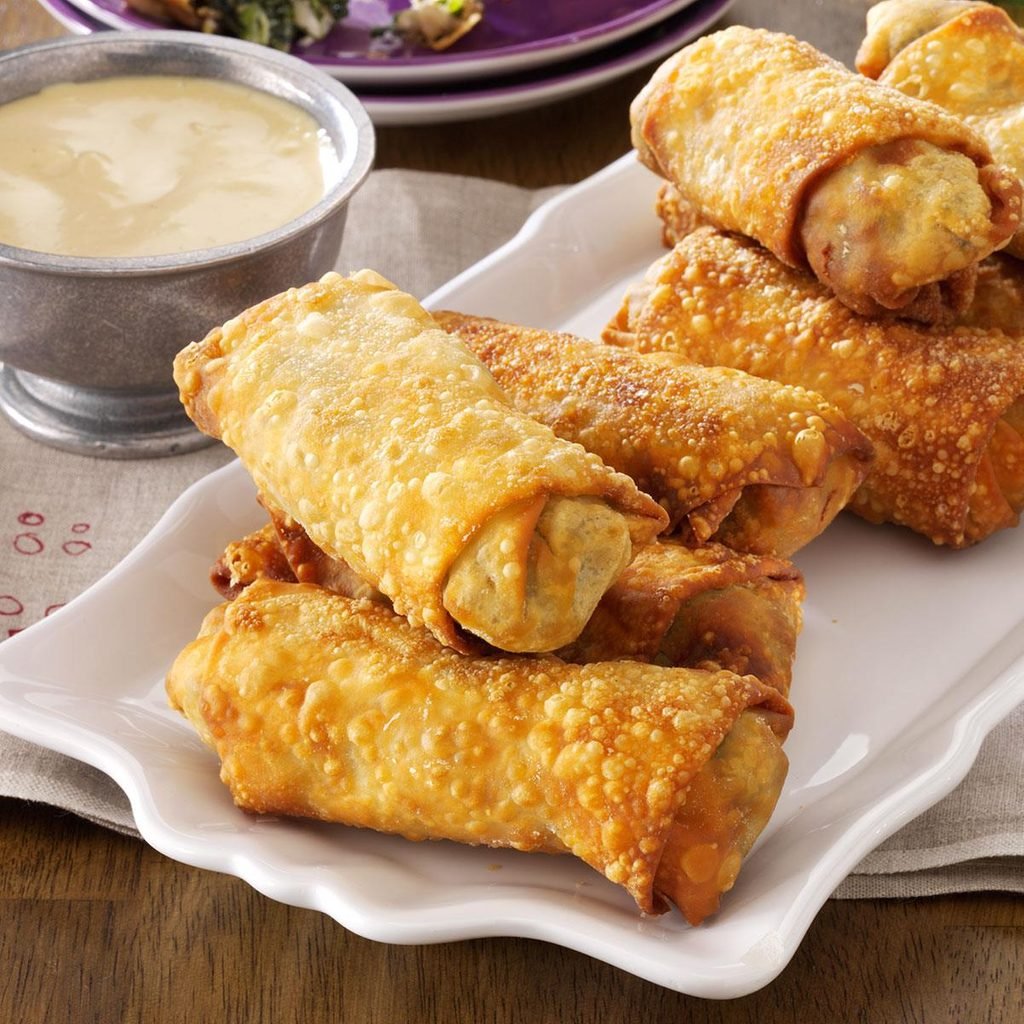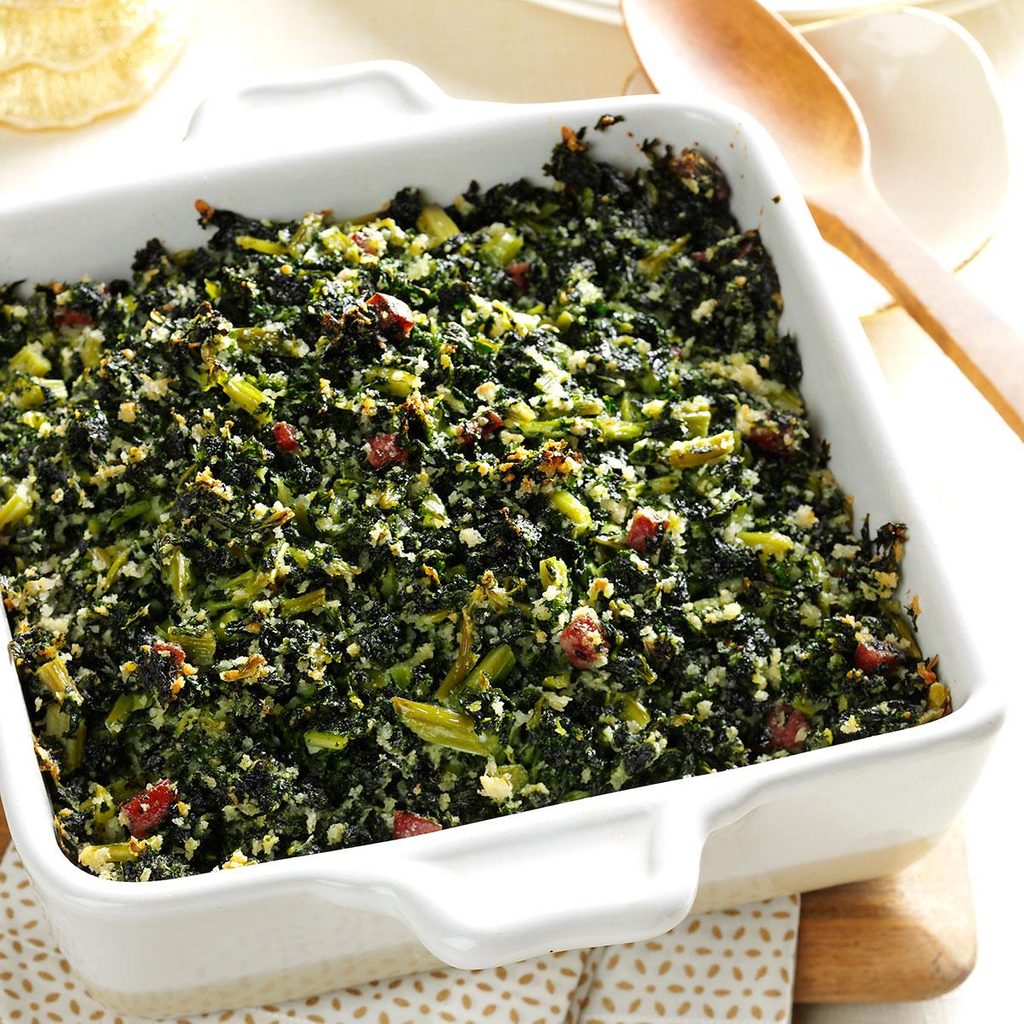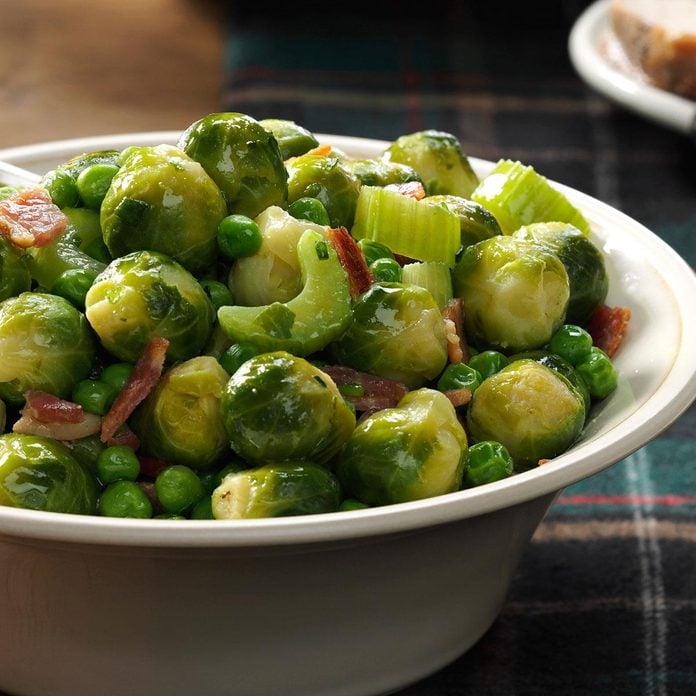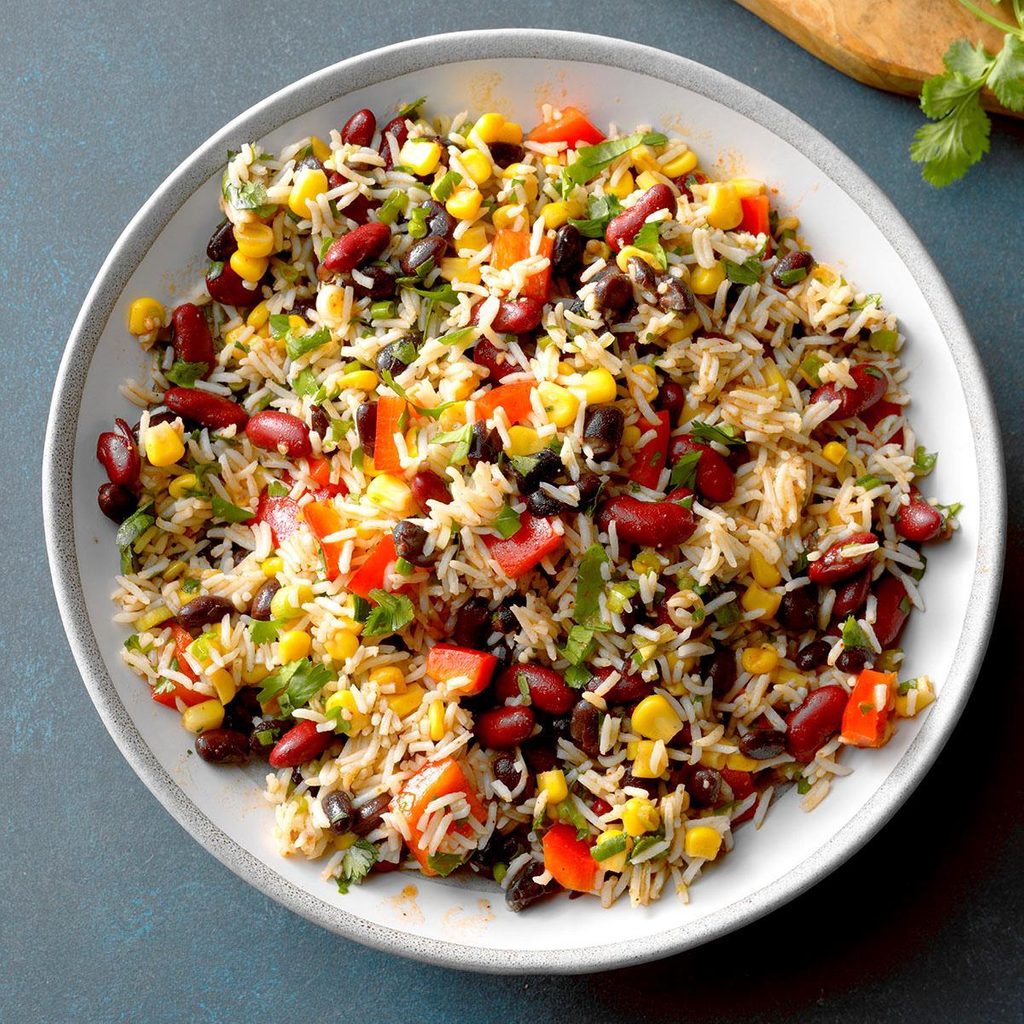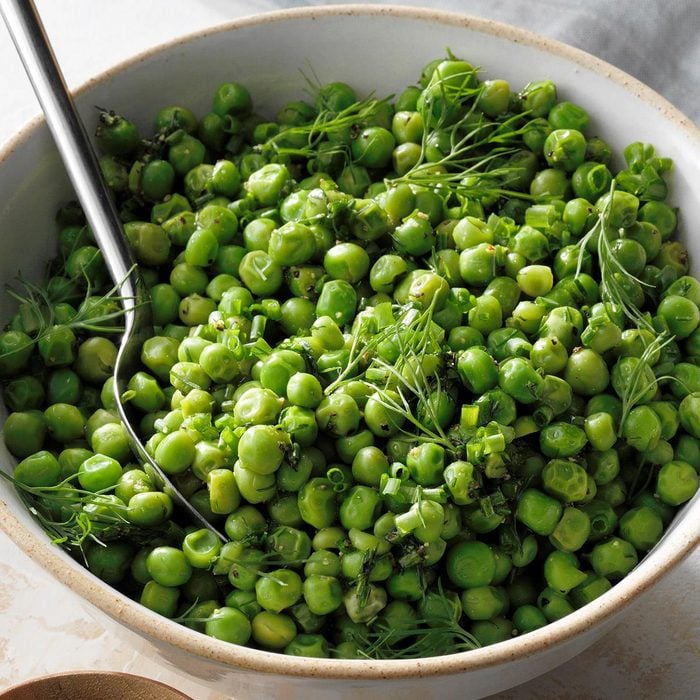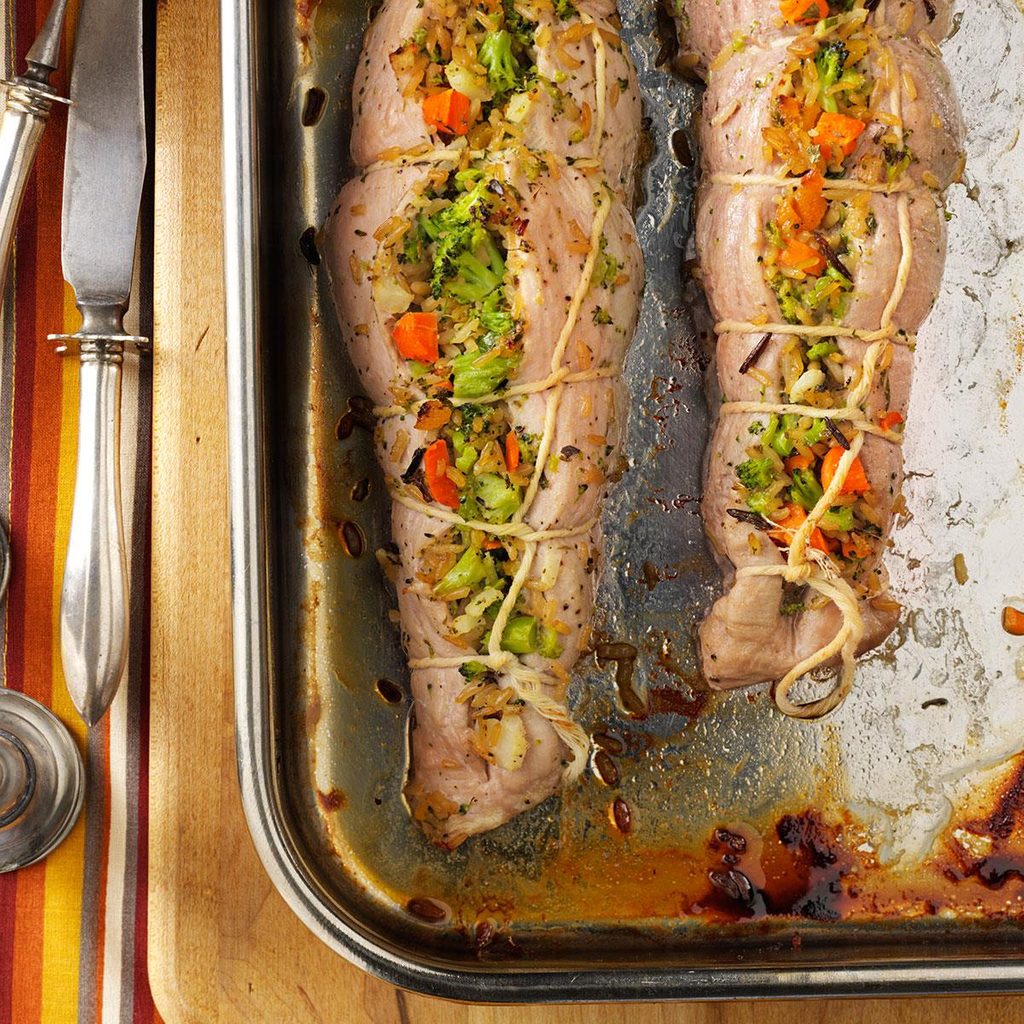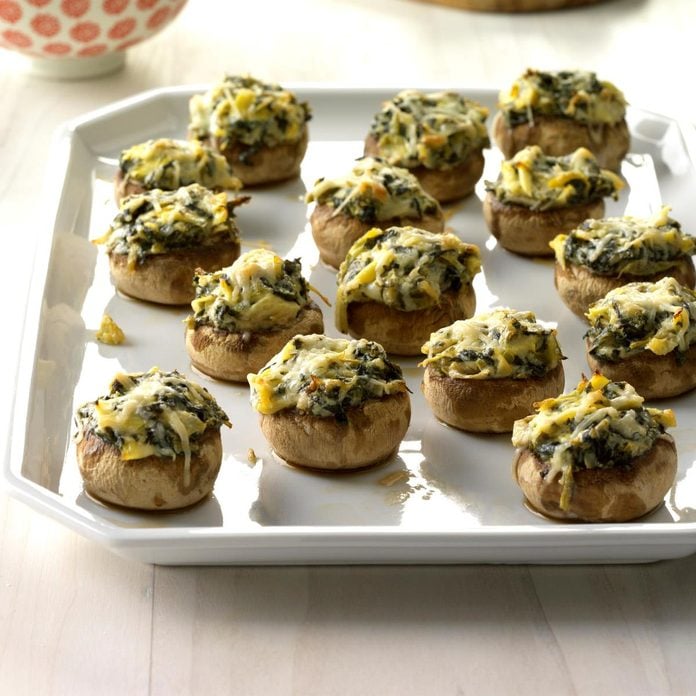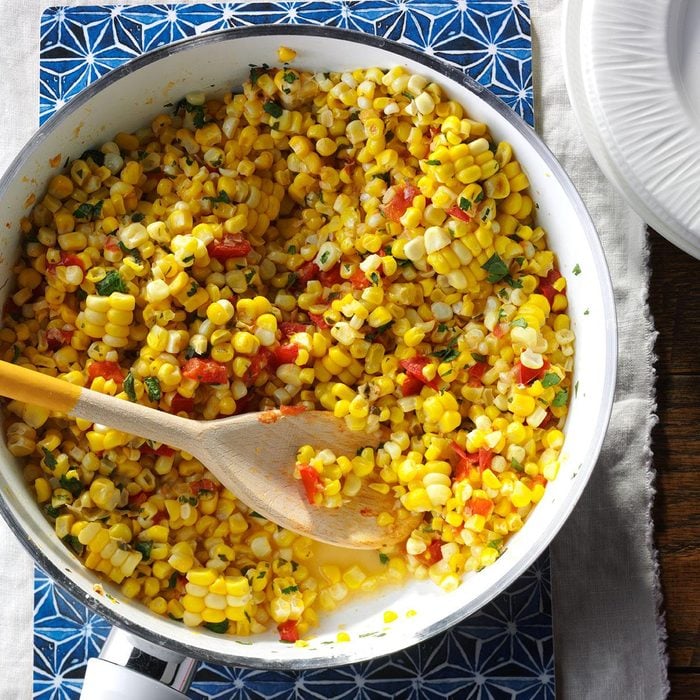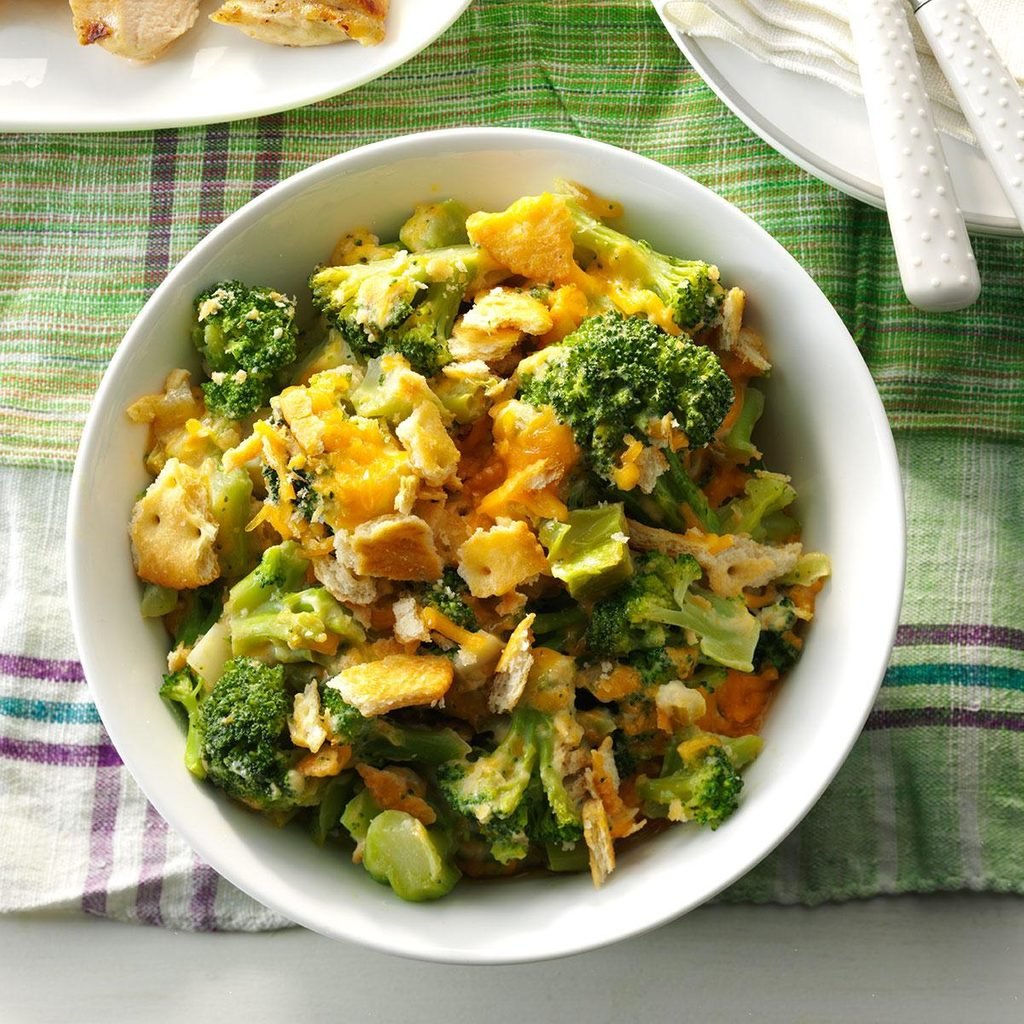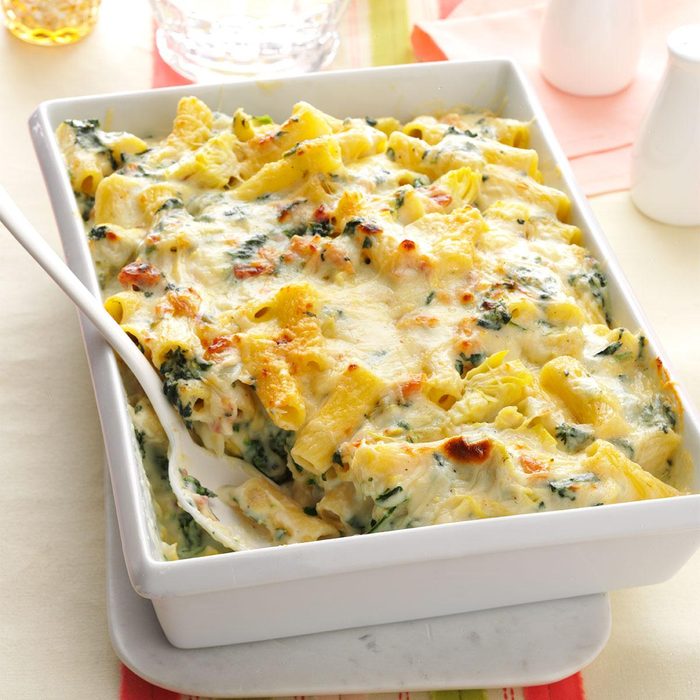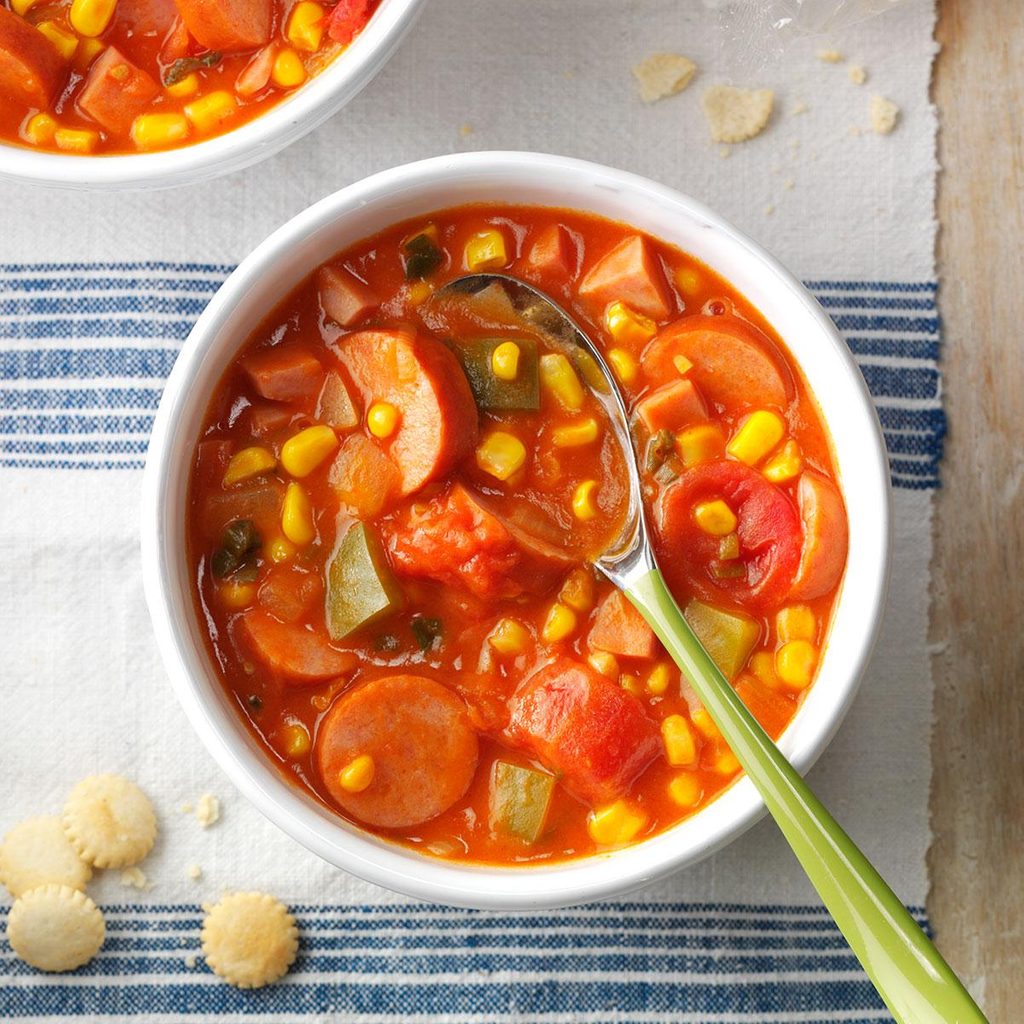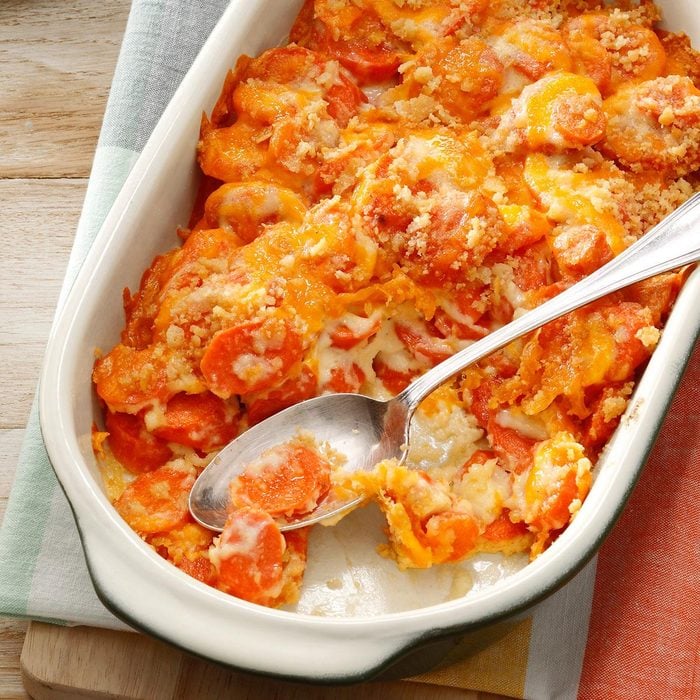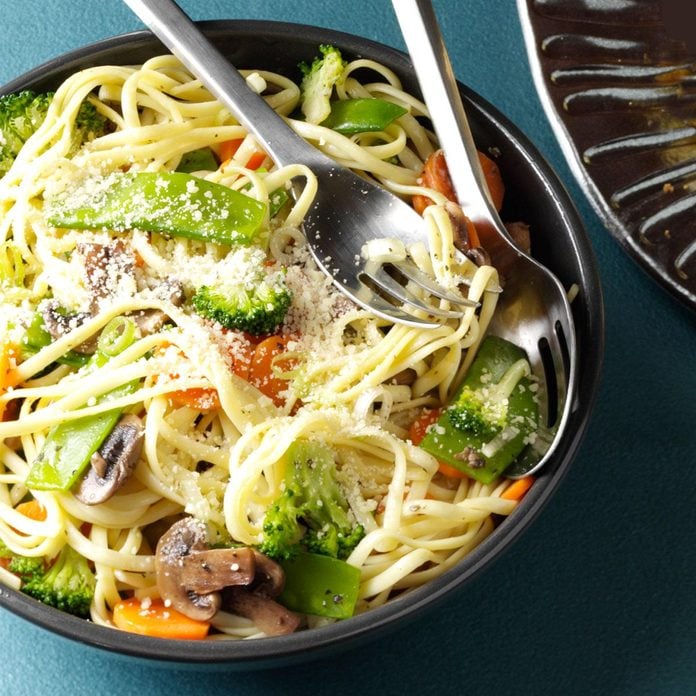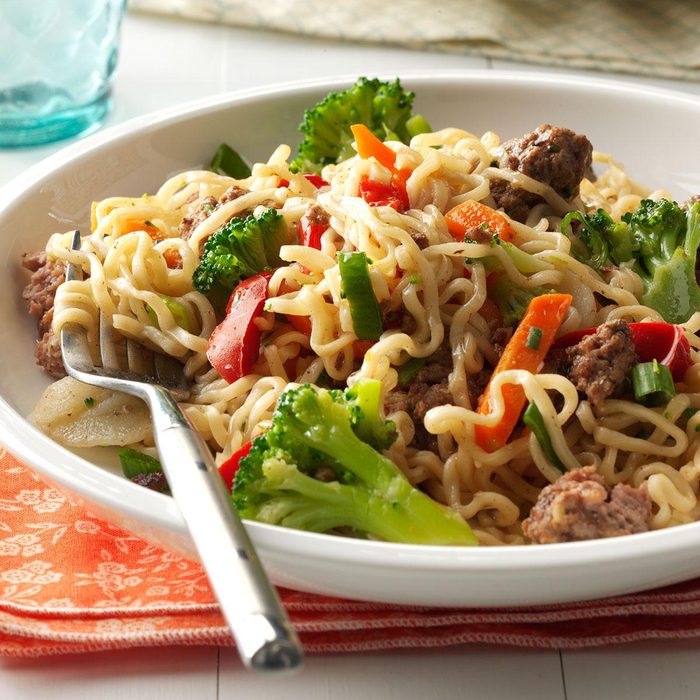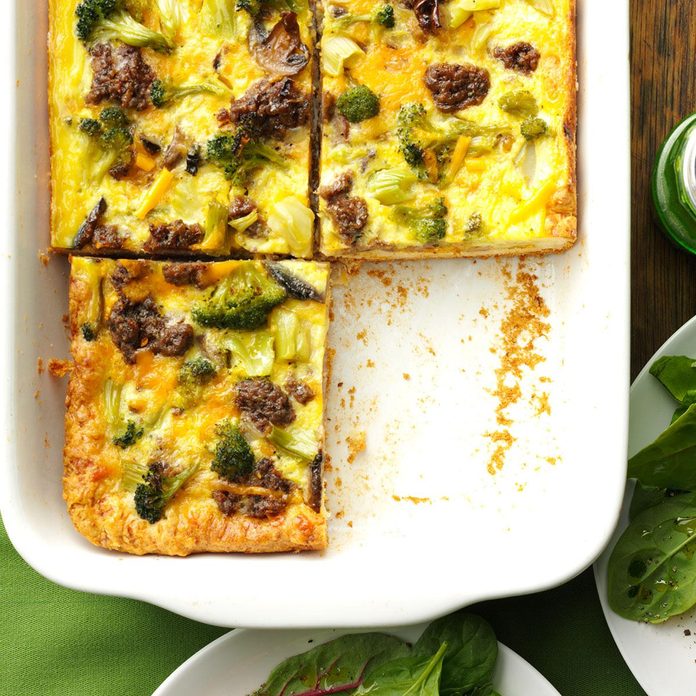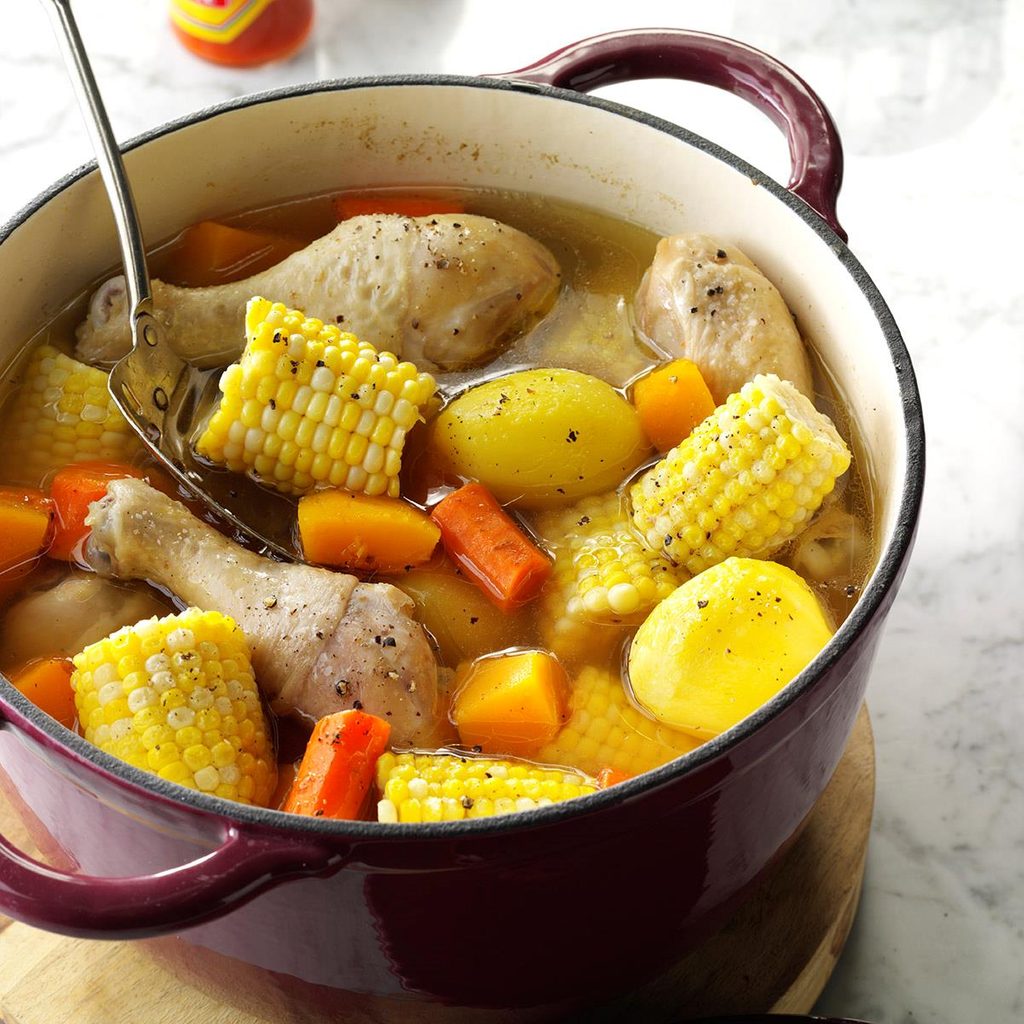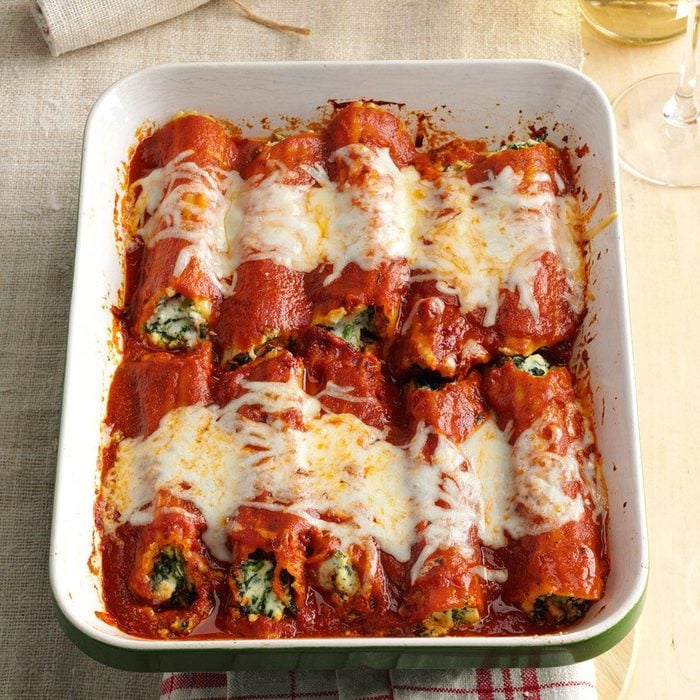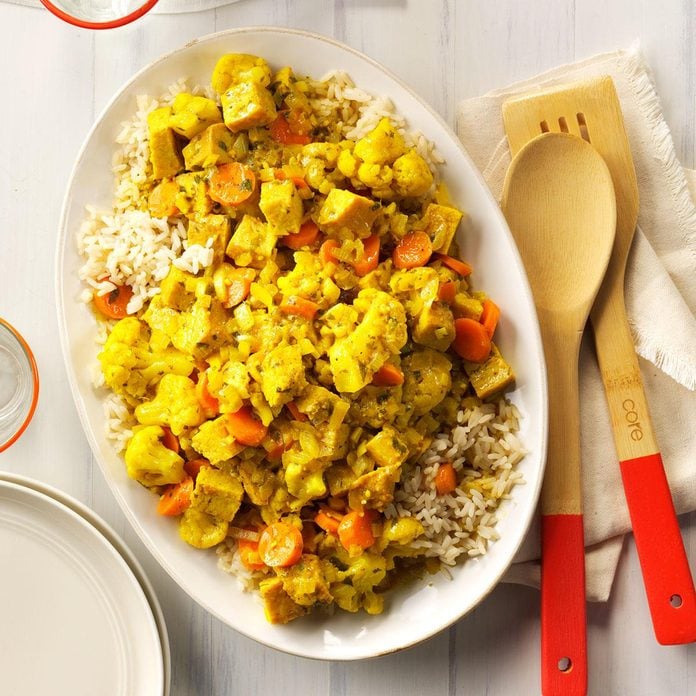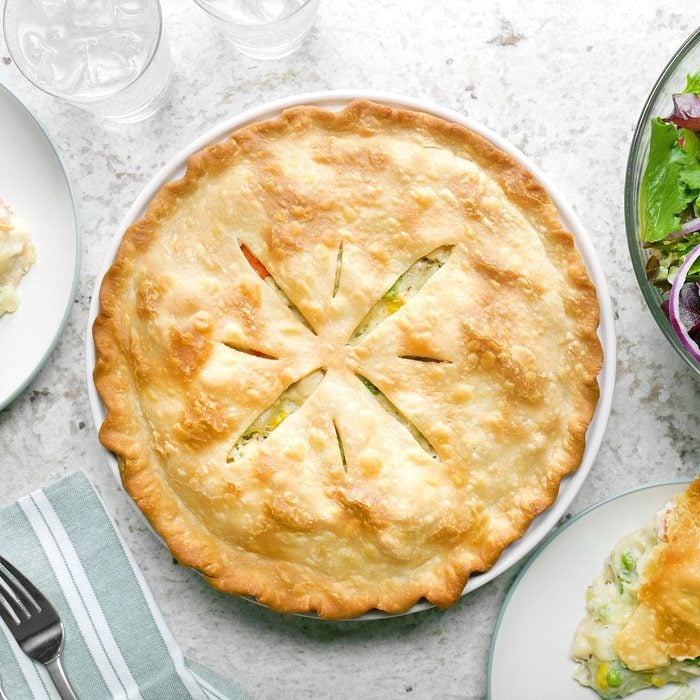Slow-Cooked Green Beans
I spent hours in search of sides for a cooking demo to present to women from my church. These easy green beans became my star attraction. —Alice White, Willow Spring, North Carolina
Go to Recipe
Crumb-Topped Broccoli BakeBroccoli is one of the main crops grown in this area. This recipe has pleased just about everyone who has tried it, including some who said they didn't like broccoli. —Hope Huggins, Santa Cruz, California
Quinoa with Peas and OnionEven picky eaters will love this protein-packed dish. If you have freshly shelled peas on hand, substitute them for the frozen. —Lori Panarella, Phoenixville, Pennsylvania
Spanakopita PinwheelsI'm enthralled with spanakopita, and this spinach and feta pinwheel recipe was a quick and easy way to enjoy the pie. I have used it for get-togethers and family events with great success. —Ryan Palmer, Windham, Maine
Slow-Cooked Vegetables with Cheese SauceWho can pass up veggies smothered in cheese? No one I know! This is an inviting recipe to serve kids who normally shy away from vegetables.
—Teresa Flowers, Sacramento, CA
Muffin-Tin Chicken PotpiesI made these personalized chicken pot pies in muffin tins for my kids, and they gobbled them up. For the record, the grown-ups did, too! —Melissa Haines, Valparaiso, Indiana
Chicken Stir-Fry BakeOne night I decided to use frozen vegetables in my chicken stir-fry. Not wanting to stand watch over the stovetop, I baked the entree in the oven. People say this tastes like it’s hot from the skillet. What’s more, it’s ready in little more than half an hour! —Carly Carter, Nashville, Tennessee
Classic Cottage PieCottage pie is a combination of ground beef or lamb with mashed potatoes, topped with a bubbling layer of cheese is the perfect comfort food. It’s a good remedy for the winter chills.—Shannon Copley, Upper Arlington, Ohio
Spinach TurnoversThe flaky cream cheese pastry adds sensational texture to these hot appetizers—and just wait until you taste the wonderful filling. I usually fix a double batch and freeze some to have on hand in case unexpected guests drop by. — Jean von Bereghy, Oconomowoc, Wisconsin
Butternut & Portobello LasagnaLasagna gets fresh flavor and color when you make it with roasted butternut squash, portobello mushrooms, basil and spinach. We feast on this. —Edward and Danielle Walker, Traverse City, Michigan
Pressure-Cooked Broccoli Egg CupsServing brunch? These delicious Instant Pot egg cups are filled with crunchy bites of broccoli and served in ramekins. I promise your company will love this tasty recipe! —Edna Hoffman, Hebron, Indiana
Thai Red Curry Chicken & VegetablesThe key to this curry chicken is getting complex flavors without heaviness. For the veggies, I like colorful pea pods, sweet red peppers and water chestnuts. —David Dahlman, Chatsworth, California
Broccoli Scalloped PotatoesThe combination of ham and cheese creates a wonderfully smoky flavor. I also love that I can cook an entire meal—vegetable and all—in one standout dish. —Denell Syslo, Fullerton, Nebraska
Bacon Pea SaladMy husband absolutely loves peas. My middle son isn't the biggest fan, but he loves bacon. So I decided to combine the two, and it was perfect! This salad is an awesome side dish, especially for barbecues. —Angela Lively, Conroe, Texas
Turkey Dumpling SoupSimmering up a big pot of this soup is one of my favorite holiday traditions. This is a variation on a recipe my mom made while I was growing up. My husband and children can't get enough of the tender dumplings. —Debbie Wolf, Mission Viejo, California
Hot Collards and Artichoke DipAnyone can pull off spinach and artichoke dip—so brighten it up using collard greens for a southern twist. Serve this dish with warm garlic naan or tortilla chips. —Billie Williams-Henderson, Bowie, Maryland
Creamy Jalapeno CornThis comforting and creamy corn side dish is appealing to almost everyone. It gets its spicy kick from jalapeno peppers.—Judy Carty, Wichita, Kansas
Au Gratin Peas and PotatoesWhile this delicious potato skillet is a wonderful side dish, we find it satisfying enough to be a main course, too. The skillet preparation takes less time than it does to bake an au gratin casserole or scalloped potatoes—but it's still good old-fashioned comfort food at its best! —Marie Peterson, DeForest, Wisconsin
Miso-Buttered SuccotashThe miso paste in this super simple and
healthy canned vegetable recipe gives depth and a hint of savoriness. To brighten the flavor profile even more, you could add a splash of your favorite white wine. —William Milton III, Clemson, South Carolina
Pronto Vegetarian PeppersIn the summer I love to serve these peppers with salad and a roll. At the end of summer, I freeze them for cold months when produce costs are high. For a hot meal on a cold day, I love to serve them with a side of warm pasta tossed in olive oil. —Renee Hollobaugh, Altoona, Pennsylvania
Creamy Noodle CasseroleMy husband, Ronald, works long hours and frequently doesn't arrive home until past 7 p.m. This casserole is ideal for those late nights—it's just as tasty after it's been warmed in the microwave. —Barb Marshall, Pickerington, Ohio
Zesty Sugar Snap PeasLemon-pepper seasoning and garlic make these crisp-tender sugar snap peas flavorful and an ideal accompaniment to a variety of entrees. You'll come to rely on this six-ingredient dish. —Taste of Home Test Kitchen
Chicken Broccoli ShellsThis cheesy entree is a make-ahead dream. Just assemble it ahead of time and put it in the oven when company arrives. I round out the meal with a tossed salad and warm bread. —Karen Jagger, Columbia City, Indiana
Beef Orange Stir-FryThis dinner for two is loaded with lots of flavor and color. Red pepper flakes add a little kick to the orange beef sauce, and the tender veggies add a pop of color. — Taste of Home Test Kitchen
Southern-Style Egg RollsSausage, black-eyed peas and turnip greens give these unique egg rolls a decidedly southern accent. When I bring them to a party, I always come home with an empty plate. —Holly Jones, Kennesaw, Georgia
Parmesan Kale CasseroleI tried coming up with a creative way to use kale, and the result was a cheesy casserole. When my husband sampled it, he absolutely loved it. Bits of summer sausage add heartiness. —Diana Johnson, Auburn, Washington
Holiday Brussels SproutsMake Brussels sprouts special with peas, celery and, of course, bacon. The recipe doubles easily if needed. —Jodie Beckman, Council Bluffs, Iowa
Cool Beans SaladThis protein-filled dish could be served as a colorful side dish or a meatless main entree. When you make it, double the recipe because it will be gone in a flash! The basmati rice adds a unique flavor and the dressing gives it a bit of a tang. —Janelle Lee, Appleton, Wisconsin
Dill & Chive PeasGrowing my own vegetables and herbs helps keep things fresh in the kitchen, but frozen peas make this side is a breeze to prepare. —Tanna Richard, Cedar Rapids, Iowa
Pork Tenderloins with Wild RiceApricots say sweet things to earthy herbs in this gravy-licious meal. Remember this recipe—it’s worthy of a weekend celebration. —Taste of Home Test Kitchen
Spinach-Artichoke Stuffed MushroomsI used this recipe when I was in a culinary-arts program and had to prepare an entire buffet by myself. It’s an impressive party appetizer yet comes together so easily. —Amy Gaisford, Salt Lake City, Utah
Southwestern Sauteed CornMy mother-in-law came up with this corn skillet dish one night for dinner. Everyone who tries it absolutely loves it! —Chandy Ward, Aumsville, Oregon
Slow-Cooked BroccoliThis family-favorite side dish is quick to fix and full of flavor. Because it simmers in a slow cooker, it frees up my oven for other things. That's a tremendous help when I'm prepping a big meal at home. —Connie Slocum, Antioch, Tennessee
Creamy Spinach & Rigatoni BakeMacaroni and cheese is one of the ultimate comfort foods. My recipe gives it an Italian twist. —Tammy Rex, New Tripoli, Pennsylvania
Asian Snow Pea TossMy love for Asian flavors sparked the idea for this easy, healthy side dish. For this Asian salad, I use just-picked peas from our garden and serve it with grilled chicken. — Mary Ann Dell, Phoenixville, Pennsylvania
Cajun Corn SoupI found this recipe years ago and substituted Cajun stewed tomatoes for a bolder taste. Now I prepare this dish for out-of-state guests who want to taste some Cajun food. Everyone who tries it gives it high marks. Plus, it's easy to prepare. —Sue Fontenot, Kinder, Louisiana
Creamy Carrot CasseroleMy mom and I developed this recipe to see if there was a carrot dish that even people who don't care for carrots would enjoy. So far, I haven't met anyone who hasn't liked this casserole. —Laurie Heward, Fillmore, Utah
If, like us, you tend to buy frozen carrots from time to time, then you need to try out these
recipes that make them taste fresh as ever!
Tuscan Artichoke & Spinach StrudelStrudels originated in Austria and often boast sweet flavors. This one is savory with Tuscan influences of tomatoes, mushrooms and pesto. —Jeanne Holt, Mendota Heights, Minnesota
Asparagus and Ham CasseroleI created this casserole one day while trying to find a good recipe for leftover ham. Instead of resorting to scalloped potatoes and ham, or ham and noodles, I tried asparagus. Everyone liked it so well, I've made it ever since.—Helen Ostronic, Omaha, Nebraska
Broccoli Veggie Pasta PrimaveraChock-full of veggies, this simple, colorful pasta makes a filling dinner. In smaller servings, it works equally well as a side dish. —Stephanie Marchese, Whitefish Bay, Wisconsin
Asian Beef and NoodlesAsian beef recipes don't get much simpler. This colorful, economical stir-fry dish takes only five ingredients—all of which you're likely to have on hand. Serve with a dash of soy sauce and a side of pineapple slices. —Laura Stenberg, Wyoming, Minnesota
Broccoli Biscuit SquaresWith their cheesy biscuit-like crust, these pretty squares disappear quickly at our house. We eat them for breakfast, brunch and dinner. —Vi Janus, Pelican Lake, Wisconsin
Ham & Veggie CasseroleI’ve paired ham with broccoli and cauliflower for years. To complete this casserole dinner, I pass around some dinner rolls. —Sherri Melotik, Oak Creek, Wisconsin
CazuelaI learned to make this dish while we were living in Chile for a few months. We grow extra butternut squash in our garden just for this recipe. —Louise Schmid, Marshall, Minnesota
Make-Ahead Spinach ManicottiWhen I invite people to dinner, many have started requesting this pasta bake ahead of time because it's that good. Plus, the manicotti is stuffed before it's cooked, making it even more convenient. —Christy Freeman, Central Point, Oregon
Turkey Curry with RiceWhen I have leftover turkey and a hankering for non-holiday food, I make turkey curry with carrots, cauliflower and mango chutney to spoon over rice. —Nancy Heishman, Las Vegas, Nevada
Best Chicken PotpieThis is the best chicken potpie recipe! Chock-full of chicken, potatoes, peas and corn, this recipe makes two golden pies, so you can serve one at supper and save the other for a busy night. —Karen Johnson, Bakersfield, California
